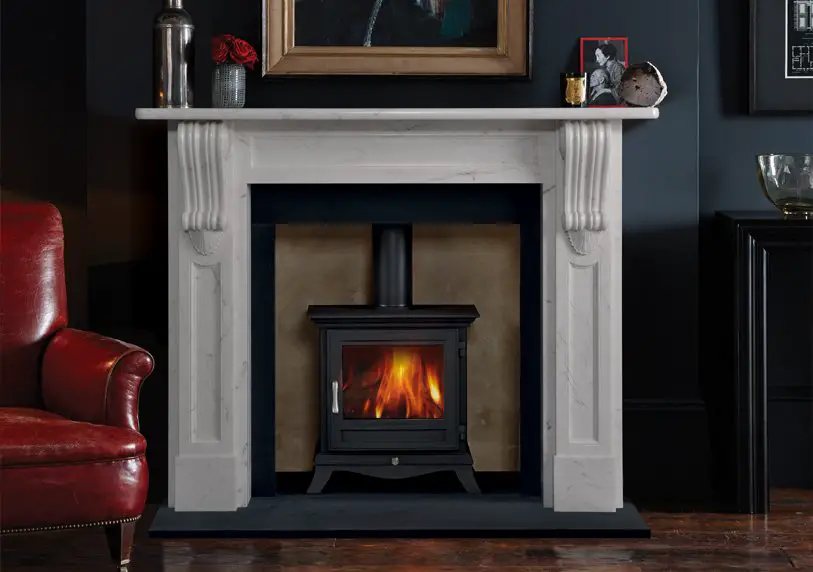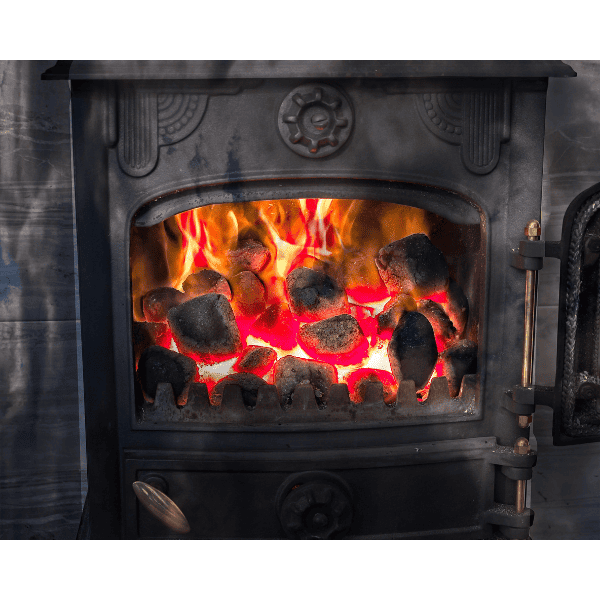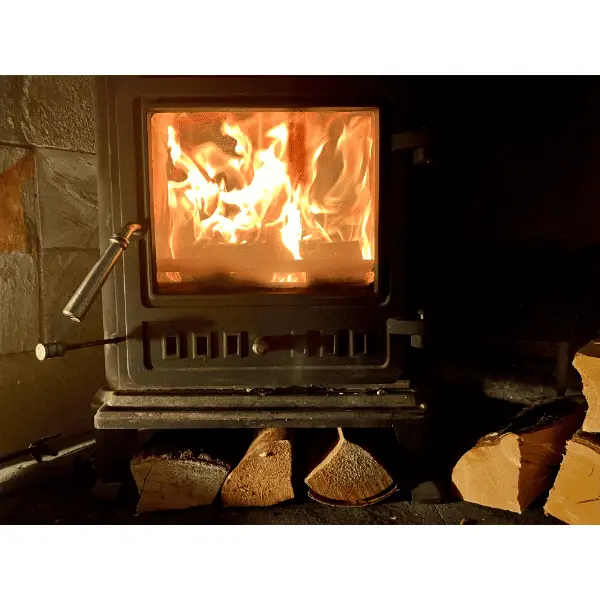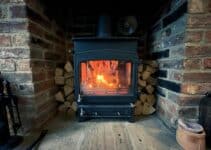Ah, log burners! They’re not only beautiful to look at but on a cold winter evening, they can warm up a room in minutes. And their practicality doesn’t stop there.
But does a log burner reduce humidity? Did you know they are also great at dehumidifying the surrounding air? It’s true. And with energy costs going through the roof, it’s nice to find a natural method of heating that has a range of other positive features for your home.
Making sure the balance of ventilation and insulation in your home is the goal of any homeowner. This maintains the optimum levels of energy efficiency.
But if you have a houseful of people or you live in a smaller home, managing moisture levels can be a problem, especially in the cooler months.
Humidity and condensation can build up quite quickly when you have the shower going a few times a day, as well as the daily cooking and washing up that are part and parcel of daily life.
People add to the humidity too through breathing and sweating. And it gets even worse if you don’t have a tumble drier and have to dry your laundry inside on a wet day.
So if the humidity in your home is a problem, installing a wood-burning stove might be part of the answer.
Does a Wood Stove Remove Humidity?
So we’ve established that wood-burning stoves can help to reduce some of the humidity in a home. But do stoves ‘remove’ the humidity? In a way, they do.
Wood stoves require ventilation holes in the air control valve. This is so air from inside the property can be drawn through into the firebox where the logs are stored. This regulates the oxygen needed to maintain the flame within.
Air in the room holds moisture. And warmer air can hold more moisture. So as the wood burner heats up it can withdraw greater amounts of this water from the air that is retained inside the room.
The air in the room enters the stove, the oxygen is used to sustain the combustion of the fuel and the moisture drawn from the air is then fired up the flue.
Condensation may still occur even in the most well-insulated of houses but only on very cold surfaces.
So it would seem that wood-burning stoves offer a great solution to homes that have a problem with humidity. Of course, the stoves do have to be sited as near as possible to the problem area in larger houses. But for small homes, they work a treat.

Do Log Burners Dry The Air?
All forms of heat from a log burner, it does have the ability to dry out the air in your home. We do have to remember, though, that this reduction in humidity works in damp and cooler climates. But it can sap the needed humidity from a space or small home in warmer or dryer climates or in homes that are really well insulated.
If you live in a warm, dry area or your home is well insulated and you have a wood stove, you may want to increase the humidity of your room.
But how do you do it?
How Do You Humidify a Room with a Wood Stove?
Wood-burning stoves are wonderful to cosy up in front of on during winter months. But they are powerful heaters that dehumidify a room.
This means that if you find your home or room drying out too much or if your family are suffering from breathing issues or skin irritation, you’ll want to regulate the moisture in the air.
And the best place to start is to invest in a hygrometer. These relatively cheap devices will measure the moisture levels in your room so that you can choose when you need to humidify your space.
If the hygrometer indicates that you need to humidify your room, you can experiment with some basic home modifications to add moisture to the space.
This includes checks like making sure your ventilation is working properly or that your insulation is sufficient.
You should also check that your wood stove has been serviced regularly and is functioning properly. Your insurance requires an annual check but if you have sudden changes in wood stove humidity, it’s worth getting an inexpensive check from your wood burner installer or chimney sweep to make sure there’s nothing wrong with your stove.
If those checks are all satisfactory, there are a number of ways you can humidify a room with a wood-burning stove.
Steam Room
The easiest and cheapest way to add moisture to the room is to create steam. This can be as simple as placing a bowl of water near your stove.
The water will evaporate and add some humidity to the room. If you place the bowl away from the ventilation holes, the water will not be immediately drawn into the stove.
Using a cast iron kettle on your stove to create steam is another simple humidifying idea. Or as a more decorative option, you can buy a decorative wood-burning stove steamer.
Admittedly, they are a little pricey but they are worth it if you want to maintain a certain aesthetic in your room.
Cooking foods that use boing water like vegetables, rice and pasta also works. But keep your eye on it to make sure the water doesn’t boil away!

Clean And Steam
You can use the everyday moisture-making activities of your life work for you when you want to humidify a room with a wood-burning stove.
If your kitchen is adjacent to the room with your stove in, leave the door open when you are boiling food. And if you have a dishwasher, leave the door ajar after the cycle has finished to release the steam into the air.
With your kitchen door open, you’ll find the wood stove humidity in any rooms close by will rise too.
And if your bathroom is nearby, the same applies. You get double duty out of the steam from your shower or bath by leaving the door ajar.
This will encourage the steam to permeate into the room with your stove and increase the general humidity of your home.
And if you have a dry home, drying your laundry in the room with a log burner will perform two functions. It will dry your clothes beautifully and humidify the room.
Plug Into Humidity
If you want a more stable way to humidify your home or for a long-term approach, you could invest in an electric or battery-powered humidifier. They range in size and price depending on your needs.
Humidifier For Log Burners
They are certainly efficient and a relatively low costs solution to humidifying a room. Having said that, we haven’t come across a lovely-looking humidifier yet. But I’d recommend thus log burner humidifier
Unless your room is ultra-modern they are going to stick out a bit. But if you’ve got more traditional home décor, you can put it in an area of the room where they are not going to draw the eye.
Log Burner Humidity
It’s best to keep your eye on two things when you’ve installed a wood-burning stove. One of them is air quality.
Toxic fumes are given off when any combustion takes place, and wood-burning stoves are no exception. Most of this goes up the flue but if your stove is older or starts to malfunction, you could be at risk.
The second is to make sure the log burner humidity is correctly balanced. Almost all wood-burning stove suppliers and installation specialists recommend burning logs with a moisture content of less than 20%.
And the more moisture the wood inside a log burner, the less heat it will produce until the water is burned off.
So make sure your wood is well seasoned to make sure your log burner is working as efficiently as possible. And that way you’ll have created the ultimate atmosphere for your home.
Does a Wood Burning Stove Reduce Humidity
A wood burning stove can indeed reduce humidity levels in your home. It heats the air, thereby increasing its capacity to hold moisture, which subsequently lowers the relative humidity. However, this can sometimes create excessively dry conditions.
It’s crucial to strike a balance: while maintaining a comfortable indoor temperature, use additional methods to regulate humidity levels. As with any heating solution, moderation and intelligent use will provide optimal comfort and health benefits.




